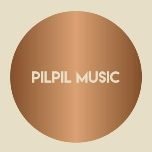Understanding Composition Stagnation
Composition stagnation refers to a state in which creators, particularly musicians and composers, find themselves unable to generate new ideas or advance their works effectively. This phenomenon can manifest in several detrimental ways, impacting not only the quality of the compositions but also the overall creative process. One of the most noticeable signs of stagnation is a lack of inspiration, where the composer feels disconnected from their work and struggles to connect emotionally with their creative output.
Another common indicator of composition stagnation is the reliance on repetitive patterns. This may occur when a composer becomes so comfortable with particular musical structures or motifs that they fail to explore new territories, resulting in compositions that feel predictable or stale. Additionally, the inability to complete projects can be a sign of stagnation; when a composer finds themselves constantly starting new compositions without ever finishing them, it indicates a significant barrier in the creative flow.
The psychological factors contributing to composition stagnation can vary from individual to individual. Pressure to achieve perfection, fear of criticism, and self-doubt may hinder a composer’s ability to express themselves freely. This internal struggle can lead to paralysis in the creative process, as the composer becomes overly concerned with the outcome rather than enjoying the act of creation itself. Furthermore, environmental factors such as lack of support or inadequate workspace can further exacerbate these feelings of stagnation.
Recognizing these signs is a crucial step in addressing the issue of composition stagnation. By understanding the underlying causes and effects, composers can begin to take proactive steps to revive their creativity and foster a more productive relationship with their craft.
Techniques to Ignite Creativity
Creativity is an essential component for any composer, yet many encounter periods of stagnation. To navigate these challenges, employing various techniques can be instrumental in reigniting inspiration. One effective approach is to change the instrument used for composition. For instance, transitioning from a piano-based framework to experimenting with string instruments can provide a fresh perspective. Different instruments often evoke unique sounds, prompting novel ideas that stimulate creative flow.
Another valuable technique involves exploring diverse musical genres. Incorporating elements from genres outside one’s comfort zone, such as jazz or electronic music, can lead to innovative compositional structures and rhythms. This exploration not only broadens the composer’s musical vocabulary but also opens avenues for blending styles and discovering new arrangements.
Setting limitations can paradoxically boost creativity. By imposing specific constraints—such as composing within a particular time limit or utilizing a limited range of notes—composers are forced to think critically and inventively. These limitations can serve as a catalyst, encouraging innovative solutions that would not have emerged in a more open-ended scenario.
Collaboration also plays a significant role in combatting creative blocks. Engaging with fellow musicians and composers provides a platform for exchanging ideas and feedback. These interactions can yield fresh perspectives and reconstruct established thoughts, fostering a collective creativity that transcends individual capabilities. Moreover, reaching out for constructive criticism can illuminate areas for improvement while inspiring alternative approaches to music creation.
Finally, participating in activities outside of music—such as visual arts, literature, or even nature excursions—can be incredibly beneficial. These experiences can stimulate the mind and seamlessly translate into musical creativity. By diversifying one’s sources of inspiration, composers can cultivate a rich tapestry of ideas that ultimately enhance their compositions.
Implementing Routine and Structure
Establishing a routine and structured approach is vital in overcoming stagnation in the process of composition. A well-defined schedule not only fosters consistency but also significantly boosts productivity. Setting aside regular practice times creates a framework that encourages writers to engage with their work daily, establishing a rhythm that can lead to heightened creativity and reduced anxiety about the writing process.
A dedicated time for exploration is equally important. It allows composers to venture beyond their usual styles or genres, experimenting with new ideas without the pressure of immediate output. These sessions can be crucial for gaining fresh perspectives and avoiding creative burnout, which is common when one feels trapped in a monotonous cycle. Goal-setting also plays a pivotal role in this process, as it transforms abstract aspirations into tangible objectives. When writers define specific milestones, it helps track progress and provides motivation to persist through challenging phases.
Incorporating organizational strategies can further enhance clarity and focus during the composition process. One method is to maintain a creative journal where ideas, feelings, and reflections can be documented freely. This practice nurtures self-awareness and enables composers to pinpoint areas needing improvement. Additionally, leveraging technology, such as writing apps or project management tools, can streamline workflow and enable better time management. These tools provide visual cues of progress and help maintain a balance between structured tasks and creative freedom.
Ultimately, finding a harmonious balance between routine and creative spontaneity is essential to prevent burnout and ensure sustained passion for writing. Striving for structure while allowing moments of unrestrained creativity can lead to a fulfilling composition experience, mitigating the risks associated with stagnation.
Seeking Inspiration from Various Sources
To avoid stagnation in compositions, it is imperative to seek inspiration from a broad array of sources. Engaging with diverse forms of art and culture not only enriches one’s creative reservoir but also stimulates new ideas that can invigorate the compositional process. Various mediums such as literature, visual arts, and live performances offer unique perspectives and narratives that can ignite the imagination and lead to novel musical expressions.
One effective strategy for maintaining a fresh flow of inspiration is to create a personal inspiration board. This board can encompass visual elements, snippets of text, and reminders of experiences that resonate personally. By curating a collection of images, quotes, and art pieces that evoke emotional responses, composers can visually represent their ideas and aspirations. This tangible space can serve as a constant reminder of what inspires them and can act as a catalyst for new creations.
In addition to personal collections, attending live performances can greatly enhance the creative process. Experiencing music in a communal environment fosters a sense of connection and can lead to a deeper appreciation of different genres and styles. The energy of a live setting often influences a composer’s own work, as they absorb the artistic expression present in the performance. Furthermore, engaging with other composers through networking is invaluable. Sharing experiences and discussing techniques allows for an exchange of ideas that can lead to inspired thinking and collaborations.
Ultimately, by actively seeking and consuming a variety of artistic forms, composers can enrich their own craft. Exploring literature, attending performances, and maintaining connections with fellow creatives ensures that the well of inspiration remains plentiful, preventing stagnation and paving the way for continual growth in compositional artistry.
NOTE: Content crafted with advanced digital assistance

